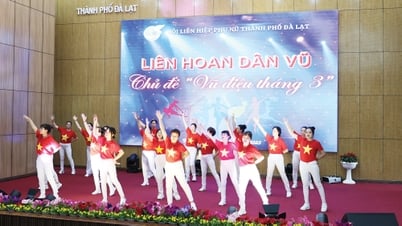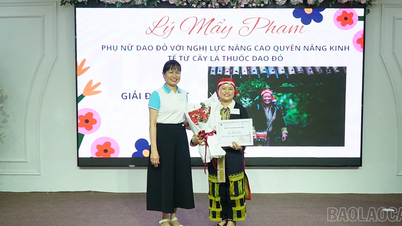Artificial intelligence (AI) is infiltrating every aspect of life, especially content creation. This technology opens up opportunities but also poses many challenges. When AI can write articles, create videos , and even make art, a question arises: Is this a step forward or a threat to human creativity?
Recently, I asked a writer about using AI in writing, and he shook his head: “Readers love my work because they know it’s my voice, not a machine’s.” A large website management company also asked me to find someone to write content “by hand,” not using AI, because only articles created by humans are prioritized by Google. The two stories show a clear reality: No matter how smart AI is, true creativity still requires a human mind and heart.
DeepSeek, a Chinese open-source AI model, is stirring up the tech world as a formidable rival to ChatGPT. Despite using less advanced hardware, DeepSeek has been able to match the performance of leading AI models thanks to its innovative training techniques. This success not only challenges the position of large technology corporations but also opens a new era where small companies can also join the AI race.
Not only in text creation, AI is also strongly penetrating the world of video. A series of startups such as Faceless.video, Autoshorts.ai, StoryShort.AI are developing AI platforms to help automatically create and upload videos to social networks. AI will take care of everything, from scripting, dubbing, creating background music to optimizing formats to make money on TikTok, YouTube. For just a small fee, anyone can become a content creator, attracting hundreds of thousands of views every day.
However, the proliferation of AI-generated content also raises many concerns. AI cannot distinguish the line between creativity and copying, leading to the risk of plagiarism and copyright infringement. Furthermore, AI is not able to understand the socio-cultural context, easily creating controversial, offensive, and even seriously erroneous content...
Deutsche Telekom’s recent advertising campaign is seen as a warning about the risks of parents sharing their children’s photos online. An illustrative video has shocked many people when AI can transform a 9-year-old girl into an adult version in the blink of an eye, showing how easily children’s identities can be exploited. Not stopping there, tools to combine clothes into photos can also be used to create fake news, defame anyone and exploit personal information. When misused, AI can become a tool for fraud, manipulating public opinion and violating privacy.
With the explosion of AI tools, countless content is being created without deep expertise. But when content is created so easily, is its true value guaranteed? AI can quickly synthesize, edit, and produce content at a speed that humans cannot match. However, the biggest weakness of this technology is the lack of emotion and artistic depth. A quality literary work or video is not simply a combination of a series of sentences, images, and sounds that are “technological,” but must also carry the breath, emotion, and personal perspective of the creator. This rule does not exclude less artistic content products, such as articles on a business website.
The overuse of AI has led to formulaic, unoriginal content appearing too much and the true creative values are at risk of being lost in the shuffle. Real writers, artists, and musicians always aim for uniqueness and personal stamp in their works. Valuable content must not only convey information but also touch emotions, stir thoughts, and open up the depths of the recipient’s soul.
The important question is not what AI can do, but how people should use it. Before applying AI, it is necessary to clearly understand the legal regulations to avoid violations and control the risks that this technology brings. If AI is considered a support tool, people can save time, effort, costs and be more creative. AI can come up with ideas, but we need to choose the right ideas and elevate them to a creative level. AI can build an outline for a content product, but people can suggest many additions to perfect and develop those initial suggestions. AI can create videos and create virtual MCs, but the input data needs to be carefully prepared and that data source is captured and completed by humans. The level of effectiveness of AI depends on human suggestions. The more accurate, clear, and detailed the suggestion, the easier it is for AI to grasp and perform as desired. After all, the quality of the suggestions corresponds to the knowledge and ideas of humans. So, no matter how much AI supports, AI users still have to be able to create content. The chance of success will not be equal but will still be different as in cases where AI is not used.
In fact, if we leave everything to AI, we may lose ourselves and the true value of our content products. We can use AI to assist, but the ultimate value of content must still be shaped by human emotions and thinking. Only when we know how to balance technology and personal identity can we exploit AI optimally without losing true creativity.
Source: http://baolamdong.vn/chinh-tri/202504/khi-cong-nghe-xam-lan-lanh-dia-sang-tao-38a5ccf/



![[Photo] Prime Minister Pham Minh Chinh holds meeting to launch exhibition of national achievements to celebrate 80th National Day](https://vphoto.vietnam.vn/thumb/1200x675/vietnam/resource/IMAGE/2025/6/23/0c0c37481bc64a9ab31b887dcff81e40)
![[Photo] Party Congress of the Central Internal Affairs Commission for the 2025-2030 term](https://vphoto.vietnam.vn/thumb/1200x675/vietnam/resource/IMAGE/2025/6/23/5bf03821e6dd461d9ba2fd0c9a08037b)
































![[Photo] Prime Minister Pham Minh Chinh chairs national online conference on new rural construction and poverty reduction](https://vphoto.vietnam.vn/thumb/1200x675/vietnam/resource/IMAGE/2025/6/23/0d239726be21479db1ea6d8d77691a6d)
![[Photo] Conference to disseminate the implementation of the Plan to promote digital transformation to meet the requirements of restructuring the political system's apparatus](https://vphoto.vietnam.vn/thumb/1200x675/vietnam/resource/IMAGE/2025/6/23/4744403cccd144b79086799e2ceb686e)




































































Comment (0)